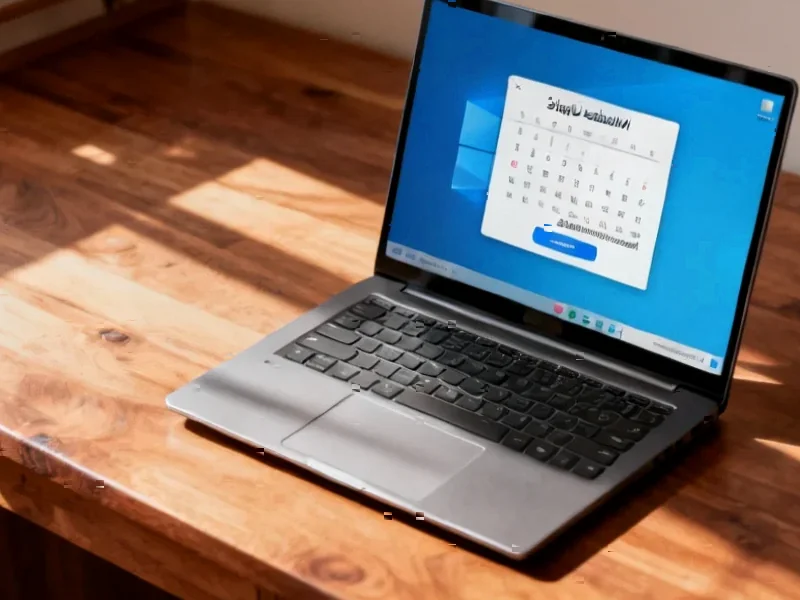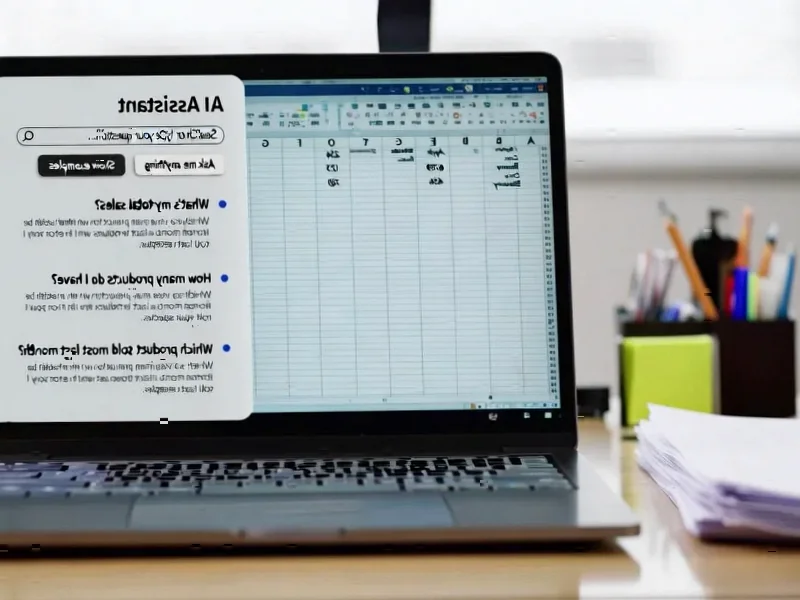According to Forbes, Microsoft has confirmed a serious Windows update mistake affecting both Windows 10 and Windows 11 users, where selecting “update and shut down” would instead trigger “update and restart.” The fix arrived in the October 2025 optional update (KB5067036) and specifically addresses Windows 11 25H2 Build 26200.7019 and newer versions. Microsoft also attempted to simplify update naming by removing technical details like dates and version numbers, but reversed course after backlash from hundreds of IT administrators who found the changes confusing. Additionally, some Windows 10 users are receiving false “end of support” notifications despite being properly enrolled in Extended Security Updates programs. These developments highlight Microsoft’s ongoing struggle to balance user experience improvements with system reliability.
The Enterprise Trust Erosion
What makes these update issues particularly concerning isn’t the individual bugs themselves, but the pattern they reveal about Microsoft’s quality assurance processes. A “decades-old bug” surviving multiple Windows versions suggests either inadequate testing protocols or organizational silos where user feedback fails to reach engineering teams. For enterprise customers who’ve invested heavily in Microsoft’s ecosystem, these recurring issues create legitimate concerns about platform stability. When IT administrators can’t trust basic system functions like shutdown behavior or update descriptions, it undermines confidence in Microsoft’s ability to manage more complex enterprise deployments. The rapid reversal on simplified update naming—following what Microsoft described as a user-focused improvement—indicates either poor initial user research or insufficient consideration of enterprise workflow impacts.
Windows’ Platform Identity Crisis
Microsoft appears caught between competing visions for Windows’ future. On one hand, the push toward simplified update naming reflects a consumer-focused approach, treating Windows more like a service than an enterprise platform. This aligns with Microsoft’s broader cloud-first strategy but creates friction with enterprise customers who need detailed technical information for system management. The fact that Microsoft had to backtrack so quickly suggests internal disagreement about Windows’ primary audience. This tension isn’t new—Microsoft has struggled with Windows’ dual identity since Windows 8—but the current update controversies highlight how unresolved this fundamental positioning remains. As Microsoft continues its Windows 11 transition, these identity questions will only become more pressing.
The Future of Windows Update Architecture
Looking forward, these incidents signal that Microsoft’s current update model may be approaching its limits. The complexity of supporting multiple Windows versions across diverse hardware configurations creates inherent reliability challenges. We’re likely to see increased investment in AI-driven update validation and rollback capabilities, similar to approaches taken by cloud platforms. Microsoft may also need to reconsider its one-size-fits-all update approach, developing distinct update channels for consumer versus enterprise users with different information requirements and stability thresholds. The company’s work on cloud-native Windows principles suggests they’re aware of these limitations, but the transition will be measured in years rather than months.
Shifting Competitive Landscape Implications
These Windows update struggles occur against a backdrop of increasing competition from cloud-native alternatives and streamlined operating systems. While Microsoft’s enterprise dominance remains secure in the short term, persistent quality issues create openings for competitors offering more predictable update experiences. Apple’s macOS updates, while not without their own challenges, generally maintain clearer separation between user experience changes and system stability. More importantly, the growth of browser-based and cloud applications reduces Windows’ centrality to many workflows. Microsoft’s challenge isn’t just fixing individual bugs—it’s demonstrating that Windows can evolve into a reliably modern platform without sacrificing the stability enterprise customers require.
Long-Term Strategic Outlook
The next 12-24 months will be critical for Microsoft’s Windows strategy. We should expect increased transparency around update processes, possibly including more detailed change logs and better communication about known issues. Microsoft may also accelerate its move toward containerized application delivery and componentized updates to reduce system-wide impacts. However, the fundamental tension between innovation velocity and system stability will persist. Microsoft’s success will depend on developing clearer separation between consumer and enterprise update tracks while maintaining the unified platform benefits that make Windows valuable. How Microsoft navigates these challenges will determine whether Windows remains the dominant enterprise platform or gradually cedes ground to more specialized alternatives.




